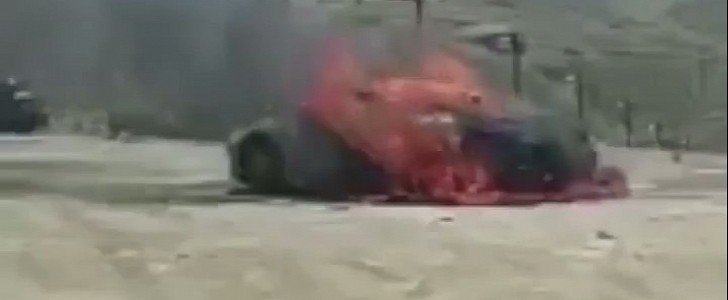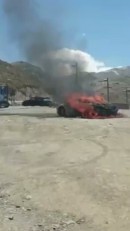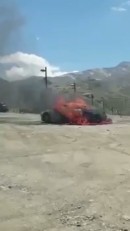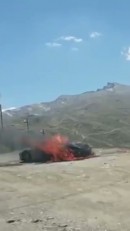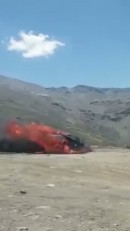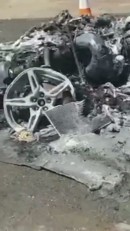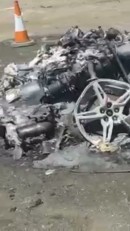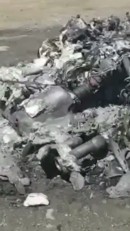Fire has had the best of a Chevrolet Corvette E-Ray prototype, which was completely destroyed in Spain during hot weather testing.
According to GMAuthority, the vehicle was tested by Bosch when the fire started in the engine bay, supposedly after an oil leak. Subsequently, the engineers pulled over, and the flames then spread to the battery pack.
Since the supplier (Bosch) was putting it through its paces in a remote area, in the Sierra Nevada Mountains, the local fire crews couldn't arrive on the scene in time to save the expensive ‘Vette prototype. As a result, by the time the fire was put out, it was turned into molten wreckage. A Chevy spokesperson told the quoted outlet that nobody was injured in this incident, which is now being investigated.
But what exactly is the Corvette E-Ray? Unless you’ve been living under a rock, you know that it is an electrified version, likely packing the 6.2-liter V8 of the normal Stingray, assisted by an electric motor said to drive the front wheels. It is understood to offer a combined 600 hp and 500 lb-ft (678 Nm) of torque and an all-wheel drive system that will inevitably improve takeoffs and traction in different conditions.
A more powerful variant is supposedly in the making, too, perhaps adding the Zora suffix. This one might share the 5.5-liter V8 with the Z06, and with the electric assistance, it might boast around 1,000 hp in total and just under 1,000 lb-ft (1,355 Nm).
None of these figures have been confirmed by the bowtie brand at the time of writing, and they should be taken with the proverbial pinch of salt. The electrified Corvette E-Ray is expected to premiere in 2023, launching as a 2024 model in the United States. A zero-emission derivative is said to follow it.
Since the supplier (Bosch) was putting it through its paces in a remote area, in the Sierra Nevada Mountains, the local fire crews couldn't arrive on the scene in time to save the expensive ‘Vette prototype. As a result, by the time the fire was put out, it was turned into molten wreckage. A Chevy spokesperson told the quoted outlet that nobody was injured in this incident, which is now being investigated.
But what exactly is the Corvette E-Ray? Unless you’ve been living under a rock, you know that it is an electrified version, likely packing the 6.2-liter V8 of the normal Stingray, assisted by an electric motor said to drive the front wheels. It is understood to offer a combined 600 hp and 500 lb-ft (678 Nm) of torque and an all-wheel drive system that will inevitably improve takeoffs and traction in different conditions.
A more powerful variant is supposedly in the making, too, perhaps adding the Zora suffix. This one might share the 5.5-liter V8 with the Z06, and with the electric assistance, it might boast around 1,000 hp in total and just under 1,000 lb-ft (1,355 Nm).
None of these figures have been confirmed by the bowtie brand at the time of writing, and they should be taken with the proverbial pinch of salt. The electrified Corvette E-Ray is expected to premiere in 2023, launching as a 2024 model in the United States. A zero-emission derivative is said to follow it.
